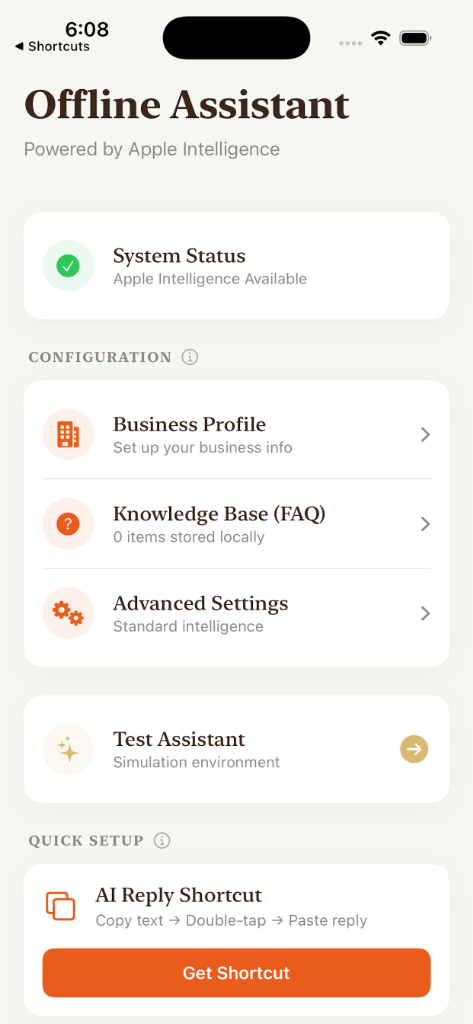Mher
Movsisyan
Architecting the bridge between Silicon and Synapse.
I am a software engineer based in Vancouver with over 16 years of
experience. My journey hasn't been traditional: it began in metalworking
engineering, where I developed a deep appreciation for precision and
building things that last.
I’ve since translated that mindset to software, having the privilege
of working with great teams at companies like Amazon and Glovo to
build systems that scale to millions of users.
Currently, I am focused on the intersection of iOS and Artificial
Intelligence. My goal is simple: to build mobile experiences that
are fast, private, and intelligent. I believe the best software gets
out of the way and lets the user focus on what matters.

if (project.isBold) { init() }_
Offline Assistant
A private, zero-UI AI assistant acting as a smart "autocomplete" for your daily communication. Powered by Apple’s Foundation Model, it instantly drafts context-aware replies from your local knowledge base without ever leaving your device. 100% offline and built for speed.
Receipt Box
A fully offline iOS app for capturing, organizing, and managing receipts using on-device OCR and Apple's Foundation LLM for intelligent text extraction.
Amazon
ROLE: SENIOR IOS ENGINEER
iOS Software Engineer in the Health organization.
- Built core audio features for Amazon Care to enhance the patient experience.
- Re-architected message attachment handling in One Medical to significantly improve performance.
- Led technical integration initiatives merging One Medical into the wider Amazon ecosystem.
- Modernized the legacy codebase by migrating key flows from UIKit to SwiftUI.
Glovo
ROLE: IOS ENGINEER
Growth & Marketing Tech team.
- Architected dynamic UI rendering engines for flexible, server-driven interfaces.
- Developed robust A/B testing infrastructure to support data-driven product growth.
Jybird LLC
ROLE: LEAD IOS
- Architected and built the entire real-time communication stack from the ground up.
- Implemented complex messaging systems including group chats and threading.
- Engineered high-quality VoIP and video calling features using WebRTC.
Earlier Career
ROLE: FREELANCE DEV
Start-up & Freelance.
- Shipped a diverse portfolio of utility apps to the App Store.
- Developed interactive educational games and animations for early childhood learning.
- Crafted engaging, touch-first experiences for younger audiences.
Services
iOS Engineering
Whether it's a greenfield project or a complex rewrite, I craft native experiences that are robust, accessible, and fast. I treat your app like my own product.
Technical Strategy
Scaling a team or a codebase is tough. I help you make the right architectural decisions early on and set up processes that keep your team's velocity high.
On-Device AI
Future-proof your app with intelligence at the edge. I integrate ML models directly on-device, ensuring privacy, offline capability, and zero latency.






